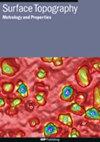Comparison of textured nylon surfaces manufactured by CNC micromachining and 3D printing
IF 2
3区 材料科学
Q2 ENGINEERING, MECHANICAL
引用次数: 0
Abstract
Patterned surfaces can be designed and engineered to control friction and wear resistance in various applications. In the present work, a comparative analysis of two contrasting manufacturing processes for surface texturing of polyamide, namely 3D printing by fused filament fabrication (FFF) and CNC micromachining (micro CNC) as additive and subtractive manufacturing techniques respectively was carried out. The analysis included the evaluation of the topography, roughness, mechanical properties, and tribological performance of the texturized surfaces. Both manufacturing routes were suitable for fabricating deterministic surfaces, being the micro CNC method the one that provided better repeatability and surface finishing as well as higher hardness. These factors influenced the tribological behavior of the polyamide when in contact with AISI 304 stainless steel. The effects of size, distribution and height of the texture elements and the manufacturing technique on the Coefficient of Friction (COF) were also discussed.通过数控微加工和 3D 打印制造的尼龙纹理表面的比较
图案化表面的设计和制造可控制各种应用中的摩擦和耐磨性。在本研究中,对聚酰胺表面纹理的两种不同制造工艺进行了对比分析,即分别作为增材制造和减材制造技术的熔融长丝制造三维打印(FFF)和数控微加工(micro CNC)。分析包括评估纹理表面的形貌、粗糙度、机械性能和摩擦学性能。两种制造方法都适用于制造确定性表面,而微型数控方法的重复性和表面光洁度更好,硬度更高。这些因素影响了聚酰胺与 AISI 304 不锈钢接触时的摩擦学行为。此外,还讨论了纹理元素的尺寸、分布和高度以及制造技术对摩擦系数(COF)的影响。
本文章由计算机程序翻译,如有差异,请以英文原文为准。
求助全文
约1分钟内获得全文
求助全文
来源期刊

Surface Topography: Metrology and Properties
Materials Science-Materials Chemistry
CiteScore
4.10
自引率
22.20%
发文量
183
期刊介绍:
An international forum for academics, industrialists and engineers to publish the latest research in surface topography measurement and characterisation, instrumentation development and the properties of surfaces.
 求助内容:
求助内容: 应助结果提醒方式:
应助结果提醒方式:


